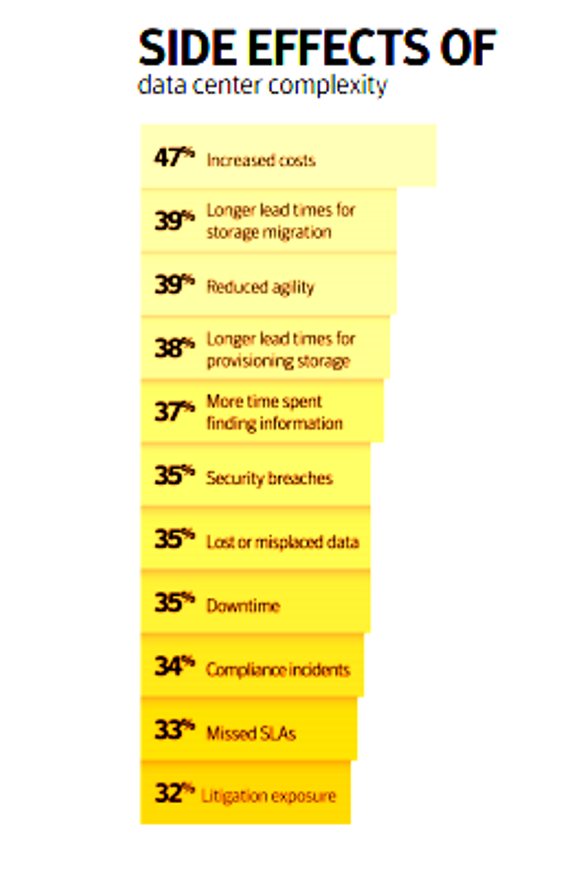The increasing pressure on data center IT operations is a growing complexity driven by the rapidly growing number of business-critical applications which in turn is leading to more downtime.
So said 65 percent of respondents to a global survey of over 2,400 IT professionals which also said trends such as mobile computing (cited by 44 percent of respondents), server virtualisation (43 percent), and public cloud (41 percent) were leading to increased complexity.
The survey said the typical organisation experienced an average of 16 data center outages in the past 12 months, at a total cost of $5.1 million (approx £3.15 million). The most common cause was systems failures, followed by human error, and natural disasters.
Other impacts include reduced agility (stated by 39 percent of respondents); longer lead times for storage migration (39 percent) and provisioning storage (38 percent); longer time to find information (37 percent); security breaches (35 percent); lost or misplaced data (35 percent); downtime (35 percent); and compliance incidents (34 percent).
Security vendor Symantec Corp. said 79 percent of organisations report increasing complexity in the data centre, according to the results of its 2012 State of the Data Centre Survey.
Implementing an information governance strategy was the main initiative as an attempt to deal with this spreading complexity.
Respondents rated complexity across all areas fairly evenly (6.6 or higher out of 10), with security topping the list at 7.1. The average level of complexity for companies around the world was 6.7. On average, organisations in the Americas rated complexity highest, at 7.8, and those in Asia-Pacific/Japan rated it lowest at 6.2.
“As today’s businesses generate more information and introduce new technologies into the data centre, these changes can either act as a sail to catch the wind and accelerate growth, or an anchor holding organisations back,” said Brian Dye, vice president, Information Intelligence Group, Symantec Corp. “The difference is up to organisations, which can meet the challenges head on by implementing controls such as standardisation or establishing an information governance strategy to keep information from becoming a liability.”
Organisations have several goals with information governance, including enhanced security (considered important by 75 percent), ease of finding the right information in a timely manner (70 percent), reduced costs of information management (69 percent) and storage (68 percent), reduced legal and compliance risks (65 and 64 percent, respectively), and a move to the cloud (59 percent).
Recommendations
Symantec offered the following recommendations that IT can try to mitigate the effects of data centre complexity.
Establish C-level ownership of information governance. Start with high-ROI projects like data loss prevention, archiving and eDiscovery to preserve critical information, find what you need and delete the rest.
Get visibility beyond platforms. Understand the business services that IT is providing and all of the dependencies to reduce downtime and miscommunications.
Understand what IT assets you have, how they are being consumed, and by whom. This will help cut costs and risk. The organisation won’t buy servers and storage it doesn’t need, teams can be held accountable for what they use, and the company can be sure it isn’t running out of capacity.

